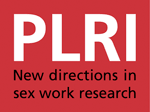journal article
An article in Culture, Health & Sexuality: An International Journal for Research, Intervention and Care, Volume 13, Issue 10. In Peru, commercial sex involving men and male-born travestis, transgenders and transsexuals (CSMT) is usually represented as a dangerous practice carried out on the streets by people experiencing economic hardship and social exclusion. However, in reality little is known about the complexities of this practice in Peru.

